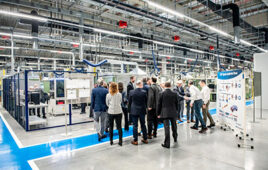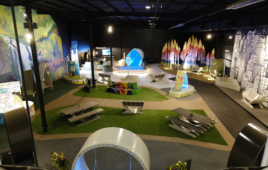The two most common systems that generate electricity from solar energy are photovoltaic cells and solar energy collectors that convert heat into electricity using a standard power plant. The type selected depends upon the existing architecture, the scale, and the specific needs of the owner. Photovoltaics may be the most widely used method of using solar energy to generate electricity today, but Concentrated Solar Power has some unique benefits that photovoltaic cells cannot offer. For one, CSP is a less expensive alternative to photovoltaic systems. At Kramer Junction in California, for instance, power costs 12¢/kWh., and in the future, it may drop to a low of 5¢/kWh.

In a Concentrated Solar Power system, mirrors direct and concentrate sunlight onto a receiver, which collects the abundance of heat that is produced. The heat then drives a conventional turbine to produce electricity. CSP systems come in three main configurations: the Dish/Engine, the Power Tower, and Linear Concentrators.
Most CSP systems in the United States are linear concentrators with parabolic trough collectors. These types use large, rectangular U-shaped mirrors that form a parabolic-shaped trough and tilt toward the sun. They reflect and focus sunlight onto a linear receiver tube that runs through the focal line of each mirror. The tube contains a fluid, most often a heat transfer agent such as oil or molten salt, which can reach extremely high temperatures. The fluid exits the receivers and is then boiled to make steam to spin a turbine or power an engine that drives a generator. As the fluid begins to cool, it enters a steam condenser for further cooling. It is then sent back into the mirrored field, and the process repeats. A portion of the fluid is also stored in large tanks to be available during low sunlight levels or during the night. Some systems use water/steam-based receivers; however, they cannot store thermal energy for later use.

CSP plants can function independently to generate electricity and create their own backup power to prevent outages during periods of low sunlight. The heat storage capacity of CSP plants acts as a buffer during cloudy days or at night and when seasonal changes affect sunlight. When sunlight is not available, the heated fluid is released from the storage tanks, drive the turbine generators, and produce electricity.
CSP plants that use parabolic troughs also can be combined with other types of systems or be hybridized, and incorporated into existing architectures that use fossil fuel. This is because they use conventional turbines or engines to generate the electricity. The U.S. Department of Energy predicts that as research continues, more utilities will consider using CSP as an addition to power plants that depend solely on fossil fuels.
New facilities are also making use of this hybrid technology. For example, Florida Power & Light Company recently announced it began construction on FPL’s Martin Next Generation Solar Energy Center — the first hybrid solar energy plant and the first utility-scale solar facility in Florida. The center will not need as much fossil fuel during the day when sunlight is available to produce heat to generate electricity. The addition of solar thermal technology will reduce natural gas consumption by approximately 41 billion ft3 and decrease the need for more than 600,000 barrels of oil over the next 30 years.
U.S. Department of Energy
www.energy.gov
National Renewable Energy Laboratory
www.nrel.gov
::Design World::
Filed Under: Green engineering • renewable energy • sustainability





Tell Us What You Think!